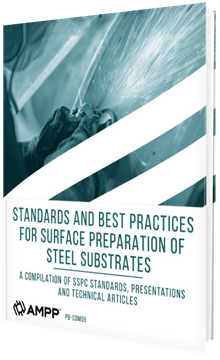Search
Products tagged with 'abrasive blasting'
View as
Sort by
Display
per page
ON THE TOPOGRAPHICAL AND PERFORMANCE EFFECTS OF REBLASTING A PREVIOUSLY PREPARED STEEL SUBSTRATE
Product Number:
51218-141-SG
Publication Date:
2018
$20.00
Partial Blast of Ultra High Solids Coatings on Navy Ships
Product Number:
51217-024-SG
Publication Date:
2017
$20.00
Rapid Installation of Replacement Connection Plates on the County of Placer/Foresthill Road Bridge - A Novel Engineered Approach to a Unique Set of Challenges
Product Number:
41214-862-SG
Publication Date:
2014
$20.00
Replica Tape- Relating 3 Surface Profile Parameters to Pull-Off Adhesion
Product Number:
41215-878-SG
Publication Date:
2015
$20.00
Spot-and-Sweep' Blasting for Cost Effective Outer Hull Surface Preparation
Product Number:
41213-760-SG
Publication Date:
2013
$20.00
SSPC Pocket Guide to Coating Information
Product Number:
PB-01301-POD
ISBN:
978-1-57590-417-7
$30.00
SSPC Pocket Guide to Coating Information
Product Number:
PB-01301-pdf
ISBN:
978-1-57590-466-5
$30.00
SSPC-SP 13/NACE No. 6-2024, Surface Preparation of Concrete
Product Number:
SSPC-SP 13/NACE No. 6-2024
$109.00
Standards and Best Practice for Surface Preparation of Steel Substrates
Product Number:
PB-C0M05-pdf
ISBN:
978-1-57590-441-2
$185.00
Standards and Best Practice for Surface Preparation of Steel Substrates
Product Number:
PB-C0M05-POD
ISBN:
978-1-57590-416-0
$185.00
The Benefits of Steel Grit Blasting and Recycling
Product Number:
51217-074-SG
Publication Date:
2017
$20.00












